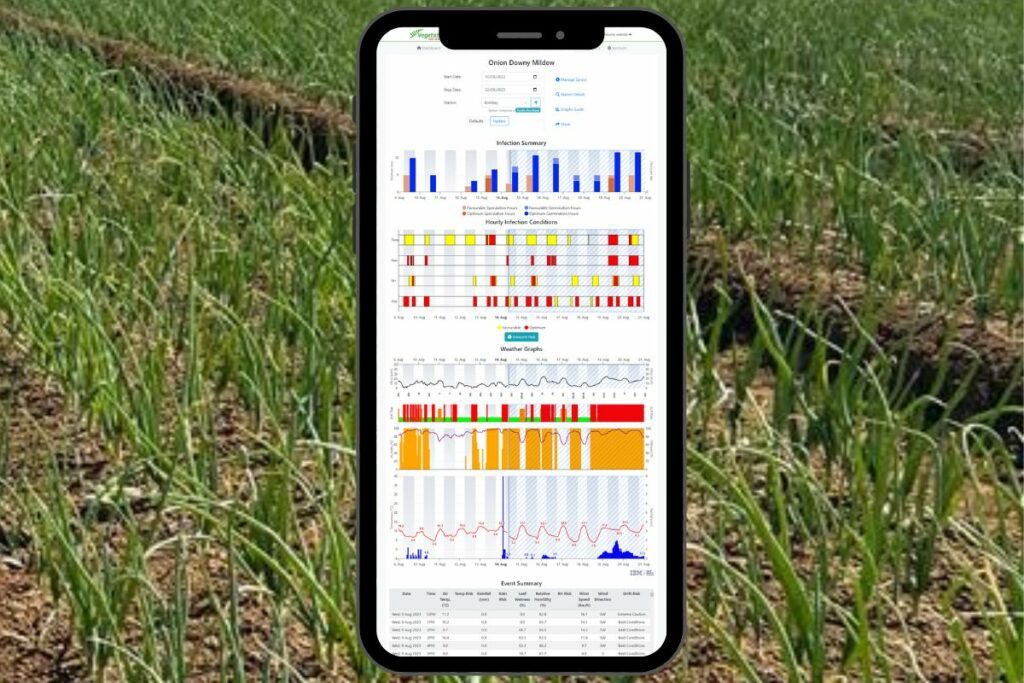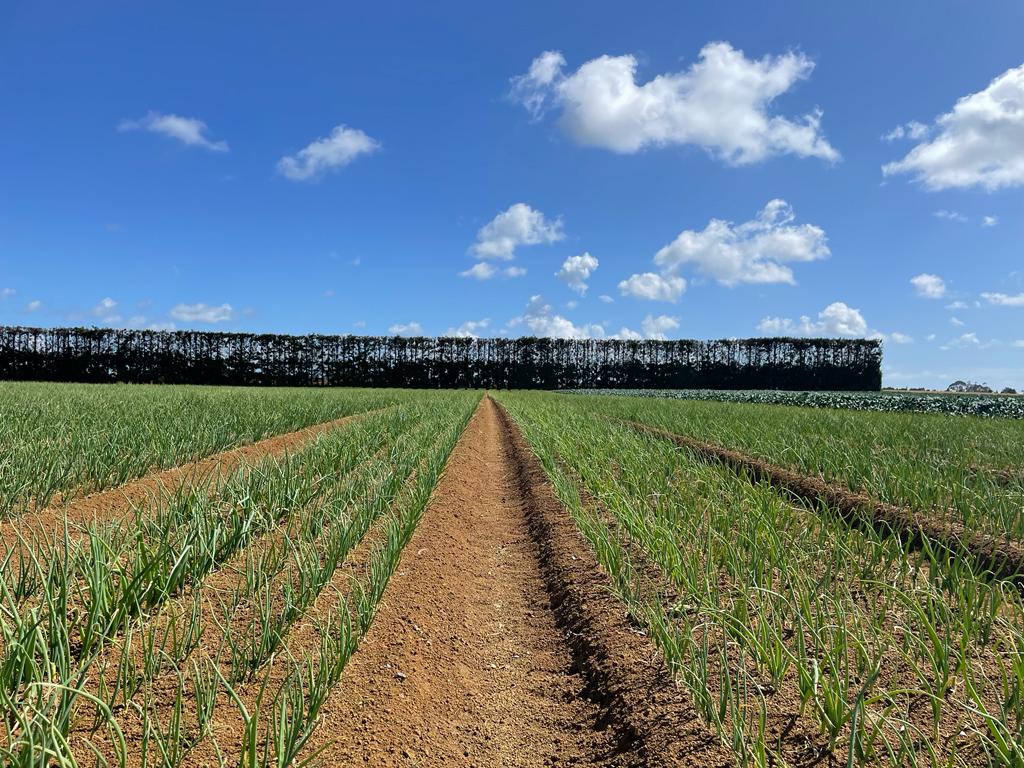A weather and disease modelling tool is playing a key role in ensuring effective use of crop protection sprays in onion crops, and this same technology is available to many other plant-based growers.
The technology developed by agri-tech experts HortPlus combines weather data with disease models created by leading researchers to help growers understand high risk periods for different diseases.
As part of the A Lighter Touch-Onions New Zealand project focusing on integrated pest management, the version of the technology designed for onion growers was updated to support decision-making around the use of fungicides for control of Downy mildew.

The Downy mildew model on screen.
Known as MetWatch, it has proved integral in management of onion crops at the ALT Pukekohe demonstration farm, where results from the most recent growing season have shown it is possible to grow a successful onion crop in New Zealand by ensuring crop protection applications are accurately targeted and without relying on the use of mancozeb.
The MetWatch Downy mildew model available on the Onions New Zealand Weather and Disease Portal has now also been released for use by commercial vegetable growers through the Vegetables New Zealand website. The Vegetables New Zealand Weather and Disease Portal, as the vegetable portal is known, offers weather insights and a disease model for Downy mildew risk. Over time the intention is to add more pest and disease models that will prove useful for vegetable growers.
The MetWatch platform that powers both the portals made available through Onions New Zealand and Vegetables New Zealand, is also used by a range of other sectors, from kiwifruit and summerfruit to arable crops, with different tools and crop specific pest and disease models for each.
The use of the MetWatch portal has been one of the keys to the successful onion crop grown last season as part of the A Lighter Touch-Onions New Zealand project at Pukekohe, according to agronomist Rob Cox, who is overseeing the onion crop demonstration.

Agronomist Rob Cox with the onion crop he has been overseeing at the Pukekohe Demonstration Farm.
He says it had been a valuable source of information on the demonstration farm to support key decisions about when to deploy sprays to combat Downy mildew and other diseases that affect onions.
With the aid of the daily MetWatch data, he has grown a successful crop of onions using phosphorus acid and systemic products other than mancozeb, despite the season carrying moderate to high Downy mildew risk.
He is confident most onion varieties with a reasonable degree of tolerance to Downy mildew can be grown with the same result. Reducing the amount of fungicides being sprayed helps prevent fungicide resistance issues, and making informed decisions about when not to spray gives growers more options if the risk level is high, and there is a need to go back to shorter intervals of spraying.
Rob recognises deciding not to spray can be a difficult decision for growers because of the risk of disease occurring, but he says the disease models provided by MetWatch allow growers to make those calls with more certainty, based on scientifically proven disease models and historic risk trends.
